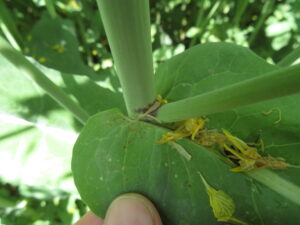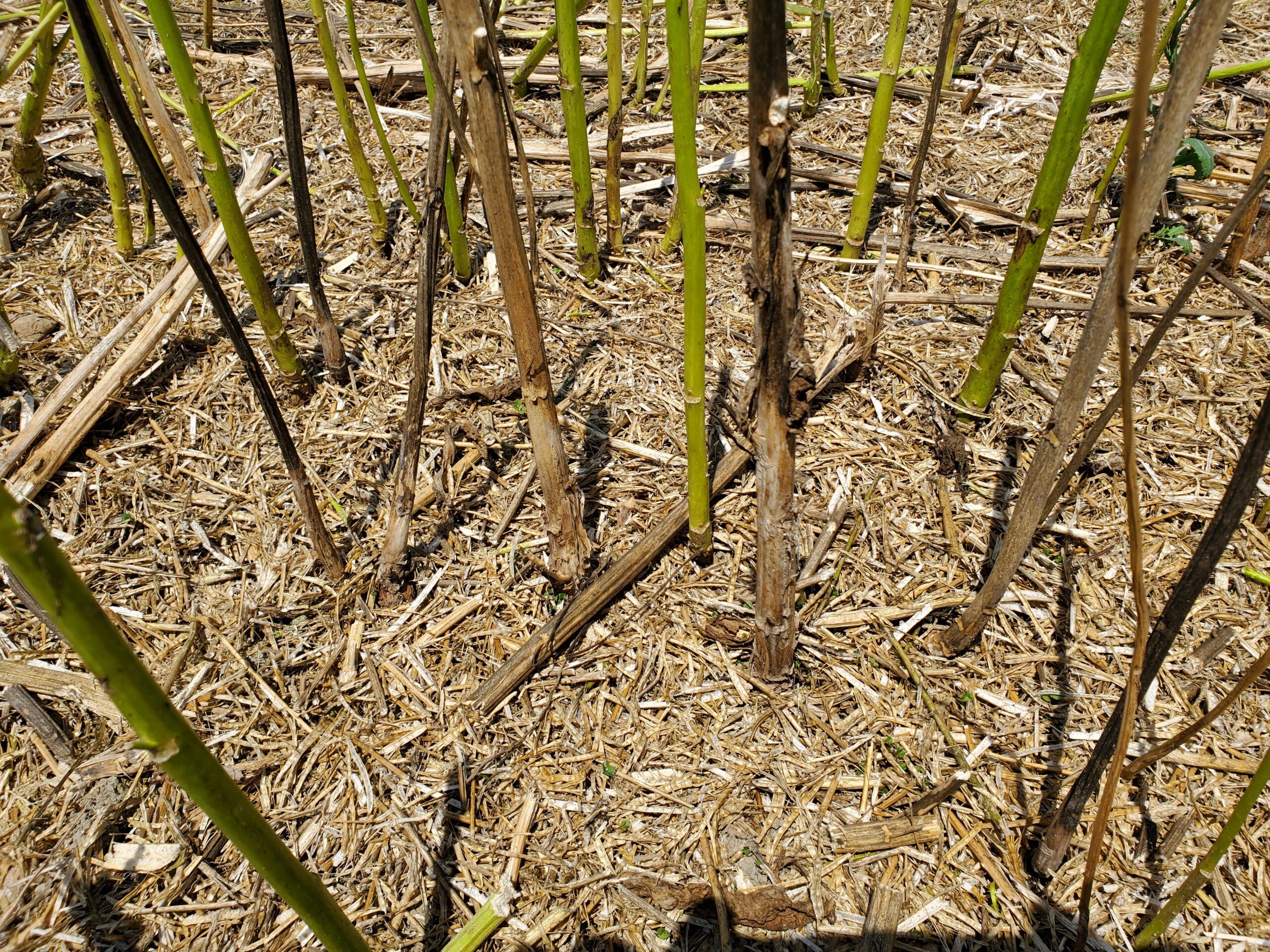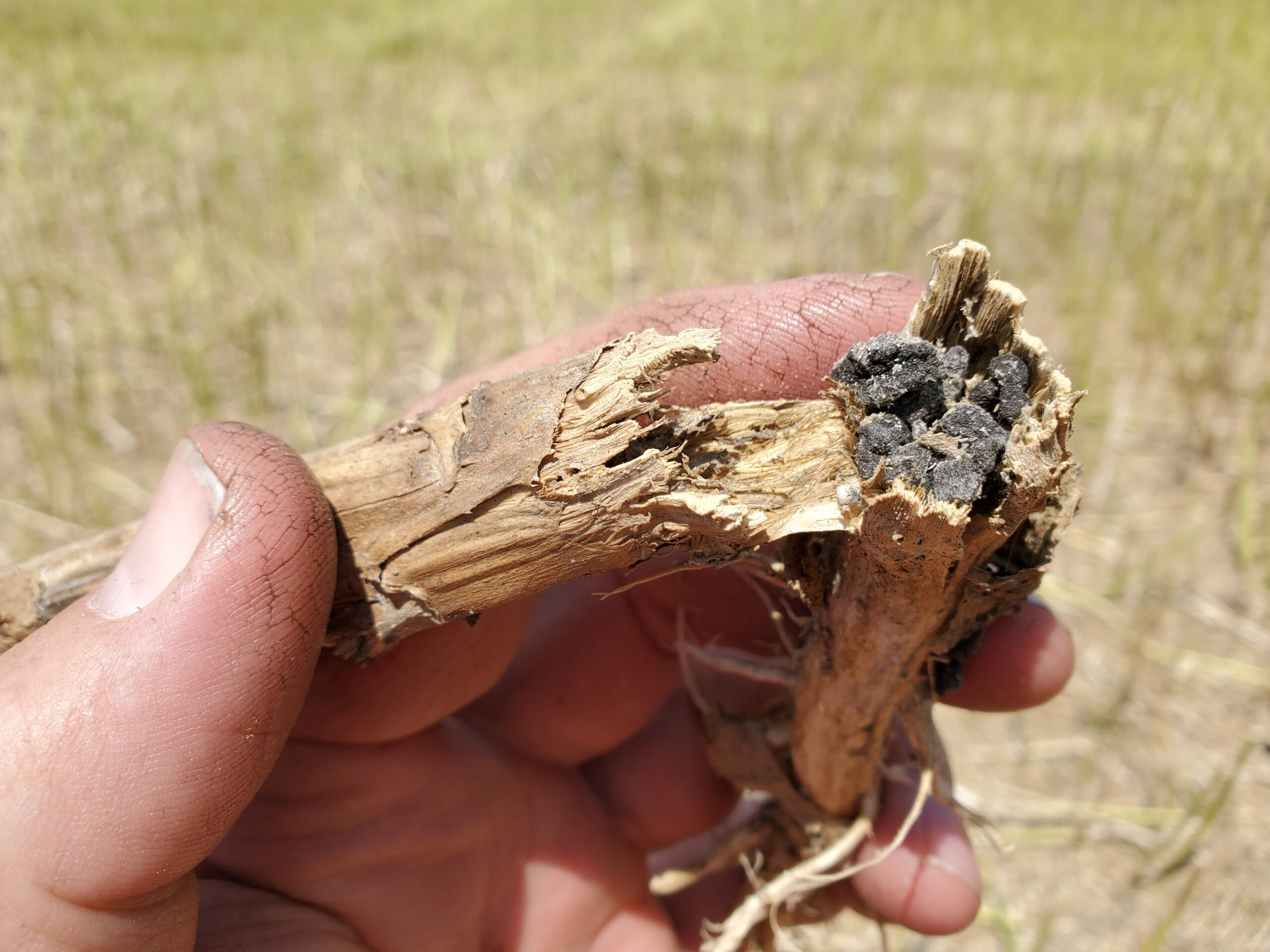Flowering has begun in many winter canola fields. Two key pests in winter canola at this growth stage are cabbage seedpod weevil (CSW) and white mould (a.k.a. Sclerotinia stem rot). These are also both pests of spring canola, and the management recommendations are the same for both types of canola.
Cabbage Seedpod Weevil
When to scout: CSW may begin to appear just prior to bolting and are found on flower buds until pods begin to form. Monitor from the first appearance of flower buds through to the end of flowering. They emerge from overwintering sites when temperatures are above 15°C.
What to look for: Adults are a conspicuous, dark grey weevil with a prominent curved snout and measure 3-4 mm in length (Figure 1). If present, they are usually easily observed on flower buds and are most abundant at field edges.
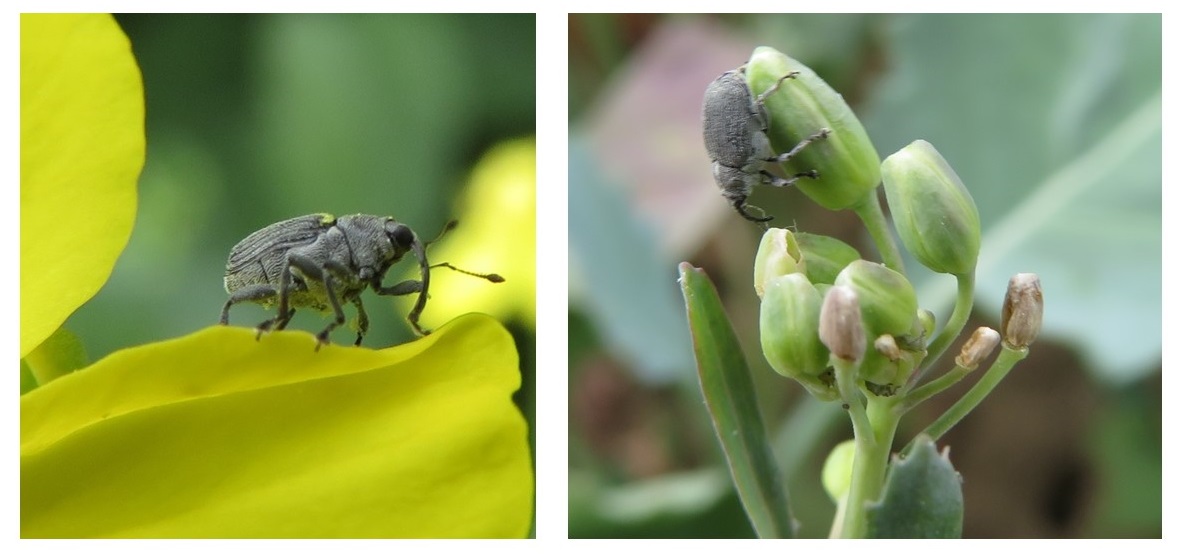
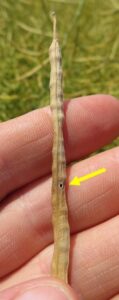
Adult weevils will feed on flower buds causing bud abortion, but the adult feeding damage rarely causes economic yield losses (Figure 2). Where there is adequate moisture, the canola plant can compensate for some loss of buds. Yield reduction is caused by the CSW larvae, which feed on seeds within developing pods and create exit holes leading to shatter losses (Figure 3).
How to scout: Scout fields using a sweep net; conduct 10 sweeps (180˚ from shoulder to shoulder) across the top of the plants in ten different locations within the field and count the number of weevils. Sweeps should be conducted in the interior of the field as well as the perimeter. Contact Meghan.Moran@ontario.ca for information or assistance with scouting.
Threshold: An average of 2-4 per sweep (greater than 20 per 10 sweeps) is the threshold for spraying insecticide. Insecticides should be applied at 10% to 20% bloom, when plants have approximately 3 to 10 open flowers, to protect developing pods. Insecticides can be added to fungicide in a one-pass system if CSW reach threshold during appropriate timing for control of white mould (20% to 50% bloom). Registered insecticides include Decis, Matador and Voliam Xpress.
The key to protecting yield is to prevent adult CSW from laying eggs in newly formed pods. Adults do not lay eggs until pods are approximately 2 cm long. If insecticides are applied too early, new flushes of CSW may invade the crop and lay eggs in developing pods leading to yield loss.
Spray late in the evening to reduce the risk to pollinators that will be foraging the crop. Note that there are often a lot of different harmless insects in winter canola fields because they are some of the first flowers on the landscape. We want to avoid unnecessary insecticide applications to blooming canola.
White Mould
Risk: Canola fields have a thick, tall canopy. It is almost always moist and humid in the canopy unless the stand is very thin and plants have not branched because of other pests or abiotic stresses. The moisture in the canopy and the moderate temperatures that commonly occur during flowering stages of winter canola provide ideal conditions for mould development where a source of inoculum is present. Ideal canola-growing weather is also ideal for white mould (optimum temperature for mould is 15-25°C) so there is typically a high risk of white mould in healthy fields. A preventive fungicide application has good return on investment.
Timing: Fungicide labels state that application should occur at 20-50% bloom. Check the growth stage of plants across the field, not just at the field edge. Count flowers on the main stem (not on branches) and compare to the bloom stage guide in Figure 4. Generally, it takes a crop two to four days to move from first flower to 10% bloom (Canola Council of Canada). Flowering will last up to 3 weeks.
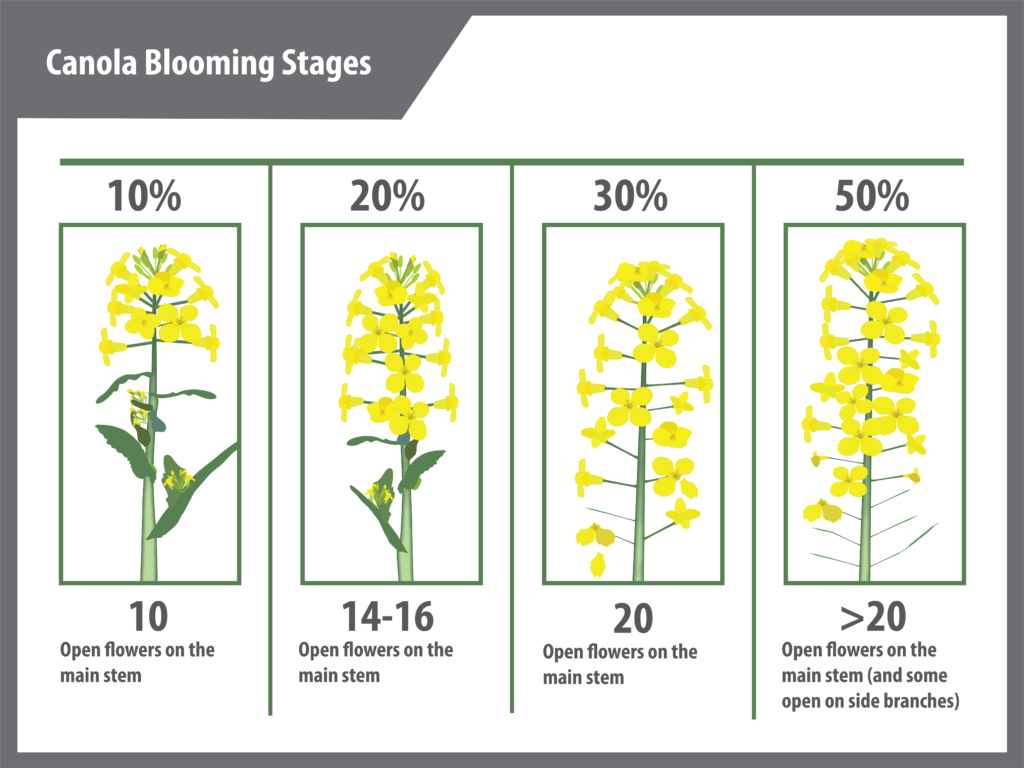
The goal is to coat as many flower petals with fungicide as possible prior to significant petal drop. White mold spores may land on stems or leaves but deteriorating flower petals are very susceptible to infection. Spores colonize flower tissue, and the disease enters other healthy plant tissues when infected flower petals land on leaves or stems (Figure 5). Infection can then rapidly spread across neighbouring plants in the field.
There are many products registered for white mould control in canola (see OMAFRA Field Crop Protection Guide – Canola Chapter). Products commonly used in Ontario canola include Proline and Cotegra.
Comprehensive information on white mould can be found on the Canola Council of Canada’s Canola Encyclopedia. Their information is focused on spring canola in Western Canada but is applicable to the Ontario winter canola crop.
